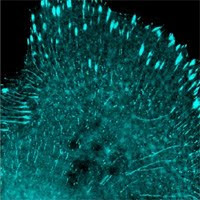One
of the major breakthroughs in modern biology is the development of
massively parallel sequencing, also called next generation sequencing
(NGS), which enabled the complete delineation of the human genome more
than a decade ago. Since then many more species’ genomes have been
sequenced, and the cost per genome has dropped from billions to mere
thousands of dollars. New discoveries are being made as a result of the
capability many research teams now possess to not only sequence
chromosomal DNA, but also to identify which regions a protein of
interest specifically binds (Chip-seq), analyze a whole transcriptome
of a cell population under investigation (RNA-seq), or find out which
RNA regions an RNA binding protein resides (CLIC-seq).
While
it is inevitable that many PIs will seriously consider the inclusion of
deep sequencing in their next grant proposal, it is not necessarily
easy to take the first step and get their feet wet, so to speak.
Knowing what format (e.g. 454 for longer reads, HighSeq for higher
accuracy, or Ion Torren for bench top convenience) to use and how much
to pay requires a vast amount of knowledge and experience. Even when
you are done with sample prep, amplification and sequencing, to handle
such massive amount of data is not trivial—transporting data alone can
be a headache. A database server for storage and analysis requires
another layer of expertise. There is no easy solution but to get
started somehow. However, be prepared to deal with these issues.
Whether
the cost on a type of next generation service is justifiable depends on
whether it is required for your purposes. For example, when analyzing a
person’s propensity of developing a disease by using known,
disease-relevant genetic information, often times exome sequencing is
sufficient. This costs anywhere between $1,000 to $3,000 with 100X
coverage, significantly less than sequencing a complete genome which
typically costs ~$5,000 at ~20x coverage.
High
coverage sequencing of maternal blood DNA has been developed into
clinically approved prenatal diagnosis of trisomy in Down’s syndrome and
other chromosomal abnormalities. Transcriptome analysis helped the
understanding of how reprogramming works when iPSCs are. Looking
forward, with more routine use of deep sequencing we can predict with
much more certainty the “off-target” effects of RNAi or cellular
toxicity of chromosomal modifications enabled by ZFN, TALEN, or CRISPR.
As a matter of fact, we believe that transcriptome sequencing should be
required after each RNAi event to prove a specific linkage between
knockdown and functions; similarly, whole genome sequencing results need
to be provided after making a site directed chromosomal change in the
future for high level publications.
*This
blog partially resulted from discussions between Jiwu Wang @Allele_Biotech and his
colleagues, who are NGS experts at UCSD’s Cellular and Molecular
Medicine, Moore Cancer Center, and BGI Americas.




No comments:
Post a Comment